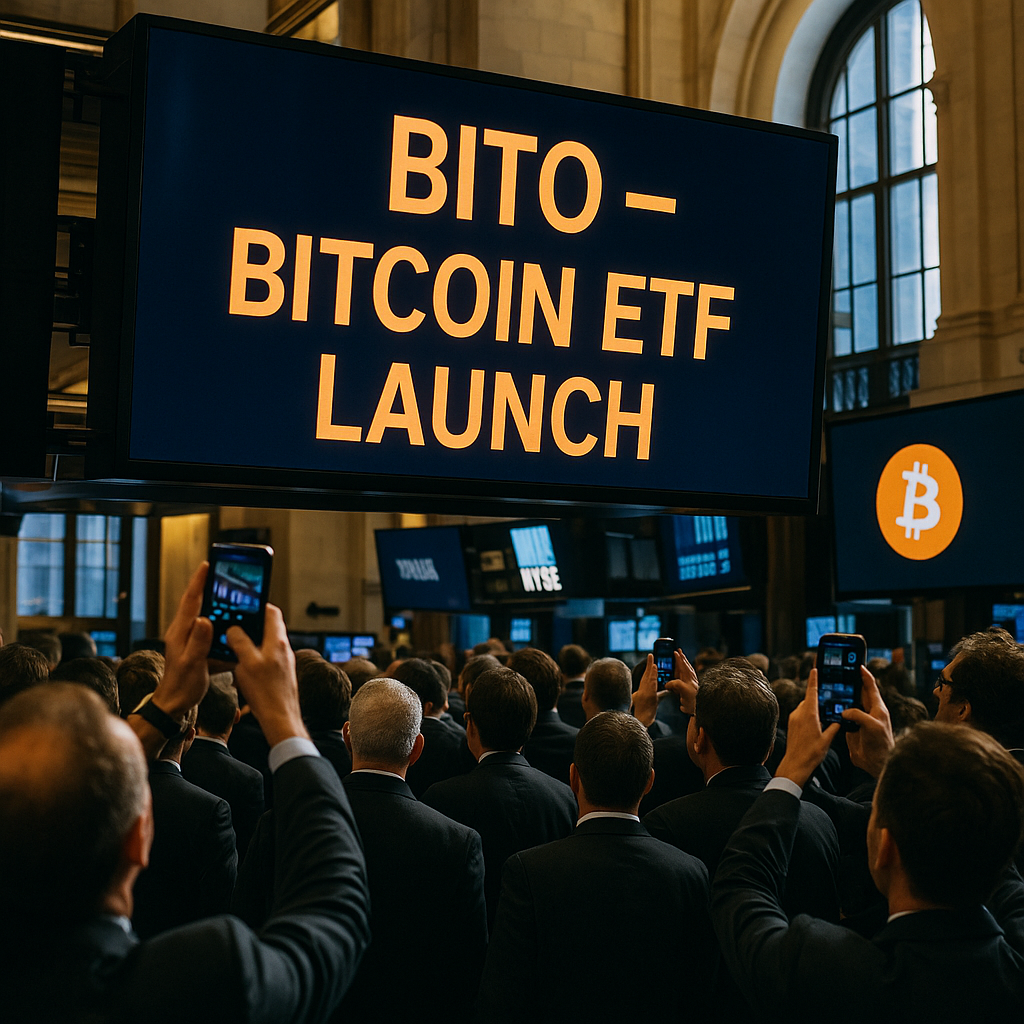First U.S. Bitcoin Futures ETF Launches on NYSE
In a historic moment for the cryptocurrency industry, the first Bitcoin futures ETF in the United States officially launched on October 19, 2021, under the ticker BITO. Managed by ProShares, the ETF began trading on the New York Stock Exchange (NYSE) and quickly saw over $1 billion in volume on its first day — one of the most successful ETF launches in history.
This event marks a significant step toward mainstream acceptance of Bitcoin in traditional financial markets. But it also raises important questions about what kind of exposure investors are getting — and what comes next.
What Is a Bitcoin Futures ETF?
Unlike a spot ETF, which holds the actual asset (in this case, Bitcoin), a futures-based ETF is tied to Bitcoin futures contracts. These are agreements to buy or sell Bitcoin at a future date at a predetermined price, and they trade on regulated platforms like the Chicago Mercantile Exchange (CME).
Key characteristics of BITO:
-
Does not hold actual Bitcoin — instead, it invests in CME-traded futures.
-
Offers investors indirect exposure to Bitcoin’s price movements.
-
Is regulated under the Investment Company Act of 1940, providing investor protections.
-
Available to traditional brokerage accounts, IRAs, and retirement funds.
This structure made the product more palatable to the U.S. Securities and Exchange Commission (SEC), which had previously rejected spot Bitcoin ETF proposals due to concerns over market manipulation and custody risks.
Why Is This ETF So Important?
The launch of BITO is more than just a new financial product — it represents a milestone in crypto regulation and adoption. Here’s why:
-
Legitimization of Bitcoin
For many traditional investors, an SEC-approved ETF provides a “safe” and familiar way to gain crypto exposure. -
Wall Street Access
BITO allows investors to buy Bitcoin exposure through standard brokerage accounts — no wallets, exchanges, or private keys needed. -
Institutional Entry Point
Retirement accounts, hedge funds, and pensions now have an accessible on-ramp to Bitcoin without having to touch the asset itself. -
First-Mover Advantage
The ETF’s rapid success is expected to encourage other asset managers to launch similar products — both futures-based and, eventually, spot-based ETFs.
Market Reaction: A New ATH for Bitcoin
The crypto market responded enthusiastically to the news. Following the ETF’s approval:
-
Bitcoin surged past $66,000 on October 20, reaching a new all-time high.
-
Trading volume on BITO topped $1 billion on day one, with assets under management reaching $570 million in 48 hours.
-
Other ETF issuers, including Valkyrie and VanEck, rushed to list their own Bitcoin-related ETFs.
This momentum confirmed strong institutional and retail demand for crypto-linked products in regulated environments.
Criticism and Limitations of a Futures ETF
Despite the excitement, some investors and analysts voiced concerns about the limitations of a futures-based product:
-
Contango Effect: Futures contracts often trade at a premium to spot prices, creating a phenomenon called contango. This can cause the ETF to underperform Bitcoin over time, especially when contracts are rolled over monthly.
-
Higher Fees: BITO charges a 0.95% annual fee, which is higher than most traditional ETFs.
-
Tracking Errors: Because it doesn’t hold Bitcoin directly, BITO may diverge from Bitcoin’s actual price performance.
-
Lack of Spot Exposure: For long-term holders or Bitcoin purists, a futures ETF doesn’t provide the same benefits as directly owning BTC, such as self-custody and use within the crypto ecosystem.
Why the SEC Approved a Futures ETF First
The SEC under Chair Gary Gensler indicated that it was more comfortable approving ETFs governed under the 1940 Act — which applies to futures ETFs — due to its stronger consumer protections.
This legal framework made it easier to regulate:
-
Market surveillance is already in place on CME.
-
Redemption and custody procedures are well established.
-
There’s precedent for other commodity futures ETFs, such as oil and gold.
Still, the SEC has yet to approve a spot Bitcoin ETF, citing ongoing concerns about potential fraud and manipulation on crypto exchanges.
Global Context: U.S. Lags Behind Other Countries
While BITO is the first Bitcoin ETF in the U.S., other countries had already approved Bitcoin-based ETFs earlier in 2021:
-
Canada launched the Purpose Bitcoin ETF (BTCC) in February 2021, which holds actual Bitcoin.
-
Brazil and Germany also have Bitcoin ETF offerings, giving investors more direct access.
The U.S. was relatively late — but its entry is highly influential due to the size and importance of its capital markets.
Investor Takeaways: Should You Buy a Bitcoin Futures ETF?
For investors interested in crypto but hesitant about self-custody or exchange risks, BITO offers a convenient entry point. However, it’s important to weigh the pros and cons:
Pros:
-
SEC-regulated
-
Easy to access via standard brokerage
-
Liquid and transparent
-
No need for wallets or keys
Cons:
-
Doesn’t track spot price exactly
-
May underperform in volatile or contango-heavy markets
-
Higher fees
-
Not suitable for long-term Bitcoin believers
Some investors may view BITO as a stepping stone while waiting for a true spot Bitcoin ETF to be approved.
Conclusion: A Pivotal Moment for Crypto Finance
The launch of the first Bitcoin futures ETF in the U.S. is a defining moment in the evolution of cryptocurrency. It signals that digital assets are no longer fringe — they are becoming integrated into traditional finance.
While not perfect, BITO opens the door for broader participation, increased regulatory clarity, and more sophisticated financial products. And as pressure builds, a spot Bitcoin ETF may not be far behind.
October 2021 will be remembered as the month Wall Street truly embraced Bitcoin — even if indirectly.
